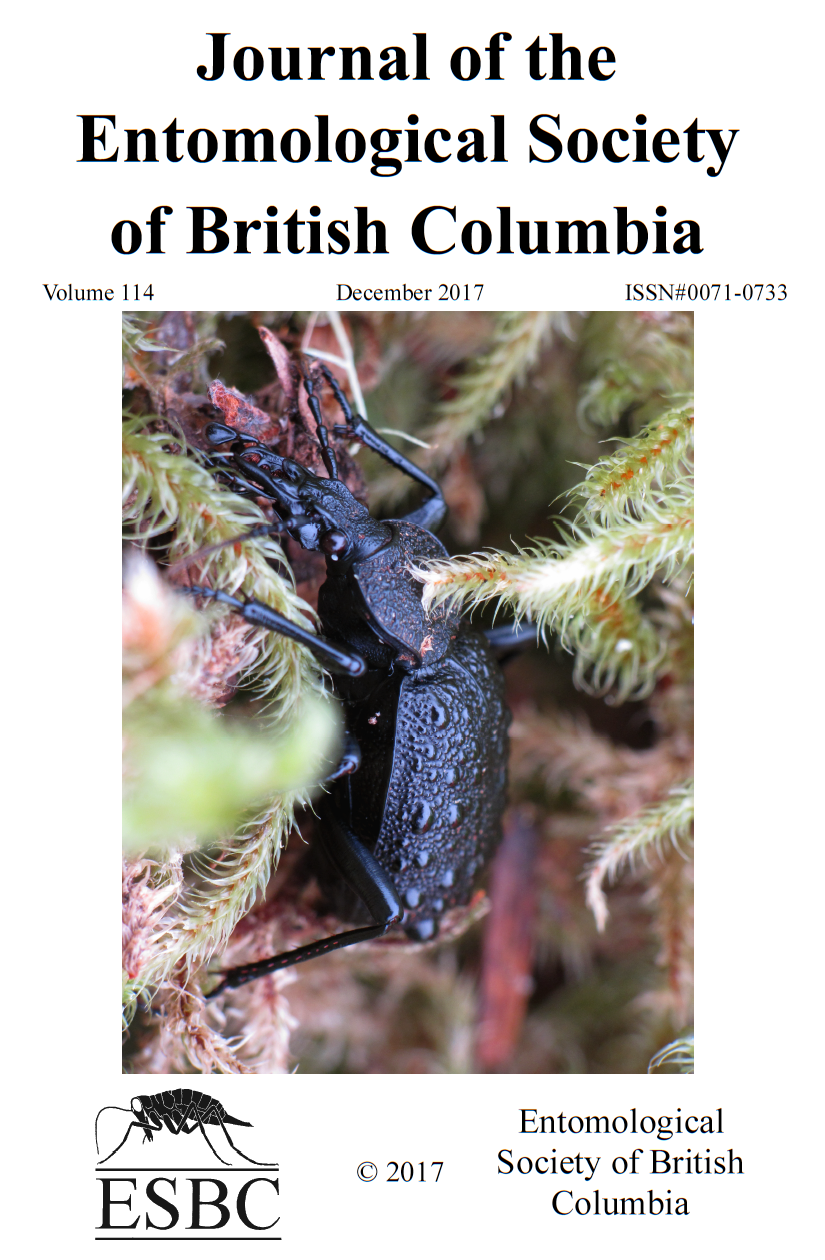First identifications of aphid and diamondback moth populations on wasabi in British Columbia
Abstract
Wasabi is a highly valued crop in the Pacific Northwest where commercial production is increasing. To date, little attention has been paid to its invertebrate pests. Two wasabi polyhouses in Agassiz, BC, were monitored for insect pests for 15 months. Pemphigus populitransversus Riley (poplar petiole gall aphid) recurred annually in winter months on roots throughout the polyhouses. Lipaphis pseudobrassicae Davis (turnip aphid) infested the leaves of a large number of plants. Myzus persicae Sulzer (green peach aphid) and Macrosiphum euphorbiae Thomas (potato aphid) were noted in very low numbers. Plutella xylostella Linnaeus (diamondback moth) caused shot-hole damage of the leaves. Further investigation into the role of insects as vectors and their role in pathogen pathways on this unique crop is needed.Downloads
Published
Issue
Section
License
Authors who publish with the Journal of the Entomological Society of British Columbia agree to the following terms:
-Authors retain copyright and grant the journal right of first publication with the work simultaneously licensed under a Creative Commons Attribution License that allows others to share the work with an acknowledgement of the work's authorship and initial publication in this journal.
-Authors are able to enter into separate, additional contractual arrangements for the non-exclusive distribution of the journal's published version of the work (e.g., post it to an institutional repository or publish it in a book), with an acknowledgement of its initial publication in this journal.
-Authors are permitted and encouraged to post their work online (e.g., in institutional repositories or on their website) prior to and during the submission process, as it can lead to productive exchanges, as well as earlier and greater citation of published work (See The Effect of Open Access).


